How to make an indirect water heater with their own hands?
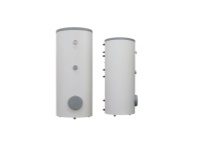
Solving the problem of hot water supply at home, very often stop at the option of indirect heating boiler. However, this type of heater is quite expensive, so the question of the possibility of creating it with their own hands is quite relevant.
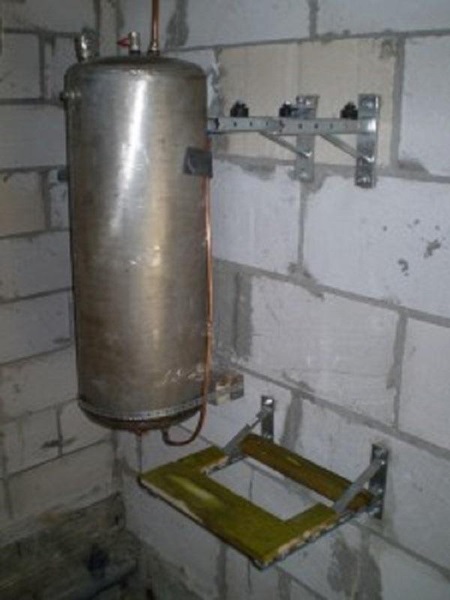
The device and principle of operation
Boiler with indirect heating is called the device storage type, the heating of water in which occurs from the coolant from the heating system. The design of this boiler is represented by the body, which houses the tank, and between the tank and the body there is a heater, which helps to keep the heat of heated water.
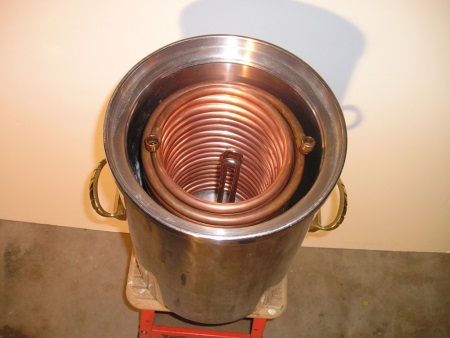
Inside the tank is placed a heat exchanger, most often in the form of a spiral pipe. It moves the coolant that enters the device from the heating system.
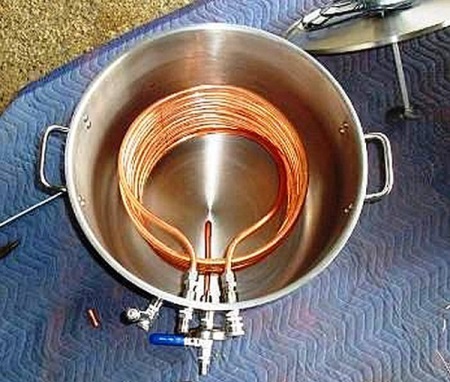
Also in each indirect heating boiler there are two inlet and outlet pipes - one is responsible for the circulation of the coolant, the other is connected to the sanitary water (which brings cold water from the water supply and takes out heated water).
The principle of operation of such a device is very simple - through the walls of the heat exchanger the heat from the coolant passes to the cold water in the boiler tank, heating it.
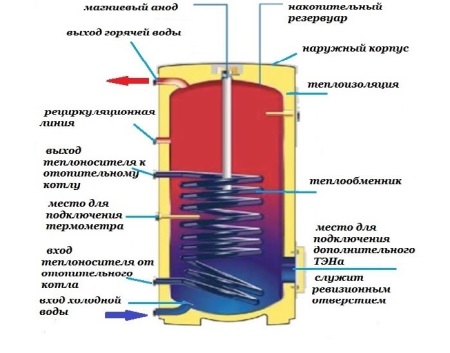
How to calculate the required volume?
In calculating the required volume of the homemade boiler, the needs of the whole family should be taken into account. One person spends an average of 5-15 liters of water per day for washing and 50-90 liters for showering. To wash dishes, on average, you need 20-25 liters of warm water per day. To take a bath, you need 160-200 liters of warm water. When calculating, you must not forget that the water in the boiler has a high temperature, and it will be almost doubled with cold water for use.
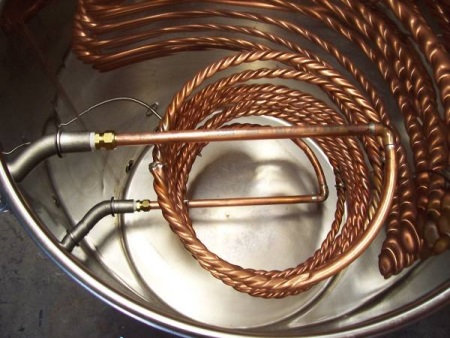
Adding up the necessary volume for all family members, the figure should be rounded up.
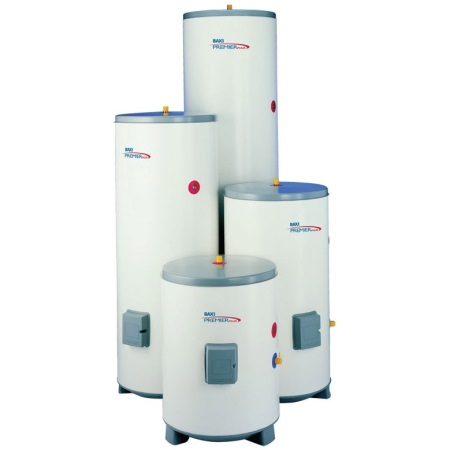
Features of boilers made with their own hands
- The installation of such a device saves the finances of the homeowner.
- The device is connected to the heating system of the house and should be installed next to the heating boiler.
- From such a device the user receives water with a constant temperature.
- If the boiler capacity is large, the heating of water in it is quite long. And during this heating the intensity of heating the premises of the house is reduced.
- Scale is gradually deposited on the heat exchanger tube, so 1-2 times a year it will have to be cleaned mechanically or with chemicals.
- Hot water from such a boiler can come only in the heating season. In order for the device to provide water in the summer, it should be built in a heating element.
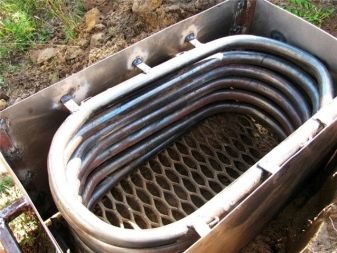
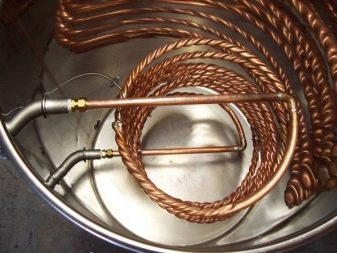
Materials
- For the tank should choose a material that is resistant to corrosion. This can be both plastic or aluminum alloy, as well as stainless steel. Also for the tank is suitable ordinary steel, if it has been previously treated with protective agents, for example, covered with enamel. It is not uncommon to use a gas cylinder as a tank, which is cleaned and primed. It is preferable to take a new cylinder so that the water does not have an unpleasant smell, and when working with it (cutting and making holes) the cylinder must be filled with water.
- For the coil, you can take a metal or metal-plastic pipe with a small diameter. A good choice is a brass or copper tube. Its diameter and length are chosen depending on the volume of the future tank.
- For the insulation of homemade boiler is suitable for any material with heat-insulating properties. For example, you can use polyurethane foam, mineral wool, isolon, foam, installation foam and other building material. The outside of such insulation is often covered with foil material.
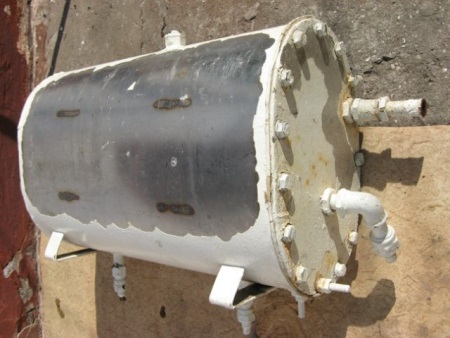
Stages of work to create a boiler
The drawing of the boiler may look as follows.
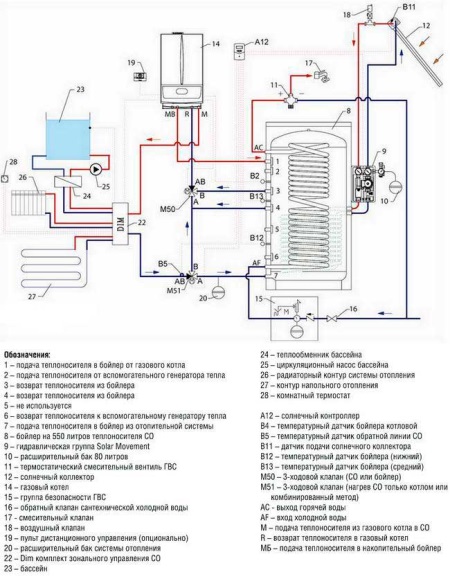
Creating a heat exchanger
When choosing the diameter of the future coil, it is important that the water in the tank is in contact with such a pipe as much as possible. To do this, leave a free space between the coils of the pipe. For the convenience of the work, you can use a log or pipe, around which the tube of the heat exchanger will be wrapped. One end of this tube is fixed, and then smoothly create coils, controlling the density of the resulting spiral.
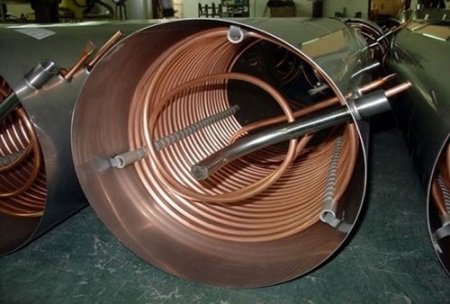
Preparing the tank of the boiler.
Having chosen a suitable container, it is necessary to make two holes in it for the input of cold water and the output of hot water. In each of them should be built ball valves for easy operation. You also need two holes to mount the heat exchanger. Another hole is needed for the drain valve, which is located at the bottom of the unit.

If the installation of an electric heater is planned, for it also drill a separate hole at the bottom of the tank.
Installing
Having prepared all the components of the future boiler, you need:
- Weld hinges to mount the boiler on the wall or feet when installing the device on the floor.
- Install the heat exchanger inside the tank.
- Connect the necessary pipes and hoses. Particular attention should be paid to the pipe through which the cold water will enter the boiler. At her be sure to mount the check valve, which prevents water from leaking from the unit.
- Install a heating element inside the tank, if this is planned.
- After checking the tightness of the coil, close the tank tightly by welding its lid.
- Insulate the unit. Attach the selected insulating material to the tank with wire ties or glue, trying to cover the entire perimeter of the appliance. Such sheathing will not only help maintain the temperature of the heated water in the boiler, but also reduce the heating time, which will increase the efficiency of the device. One option could be the use of two tanks with the laying of insulation between their walls.
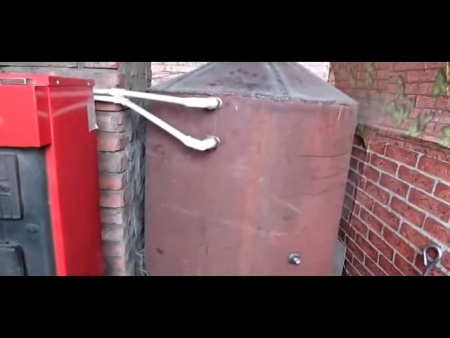
In the following video, the author Bogdan Khmelnitsky shows how he independently assembled a boiler of indirect heating.




